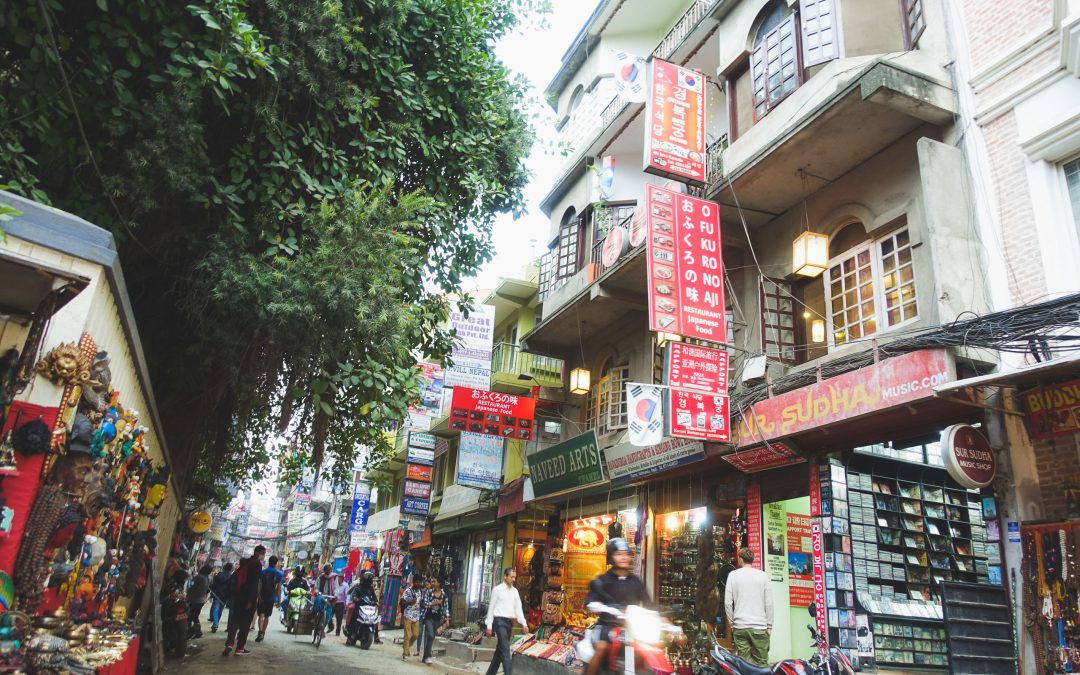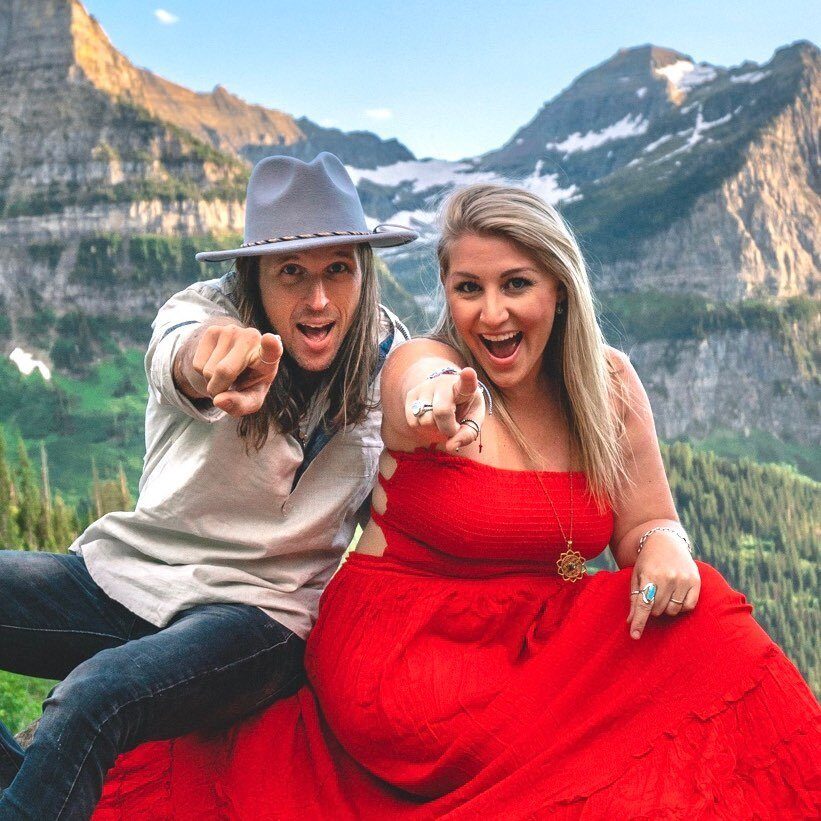I think many people would agree that one of the best ways to experience a new place or city is to explore it on foot. On our first morning in Kathmandu, we set out from our home, at the M Hotel, in Thamel on a mission to find Swayambhu. All we had was a dot on the map and a sense of adventure to carry us along. We wandered along dusty urban streets, observing the day to day life in the city and trading smiles with the locals as we walked. Life moved at a slower and pace and lacked the sense of urgency most of are so accustomed to. Our route led us across the Bishnumati River and then up some narrow and steep stared city passageways, we felt like we were really exploring now. Along the way were reminders of the 2015 earthquake in damaged buildings, collapsed walls and even a mural we found on the side of a building.


From the narrow urban side streets, we made our way back to a bustling main road. The temple grounds were marked by several white stupas with golden ornamental caps, three golden seated Buddhas, multicolored prayer flags flying in the wind and many enterprising locals offering to be your tour guide. We nearly got wrapped up by one such person, but fortunately were able to escape and just experience it on our own. From the street where we stood, we realized that our journey to the temple was not over yet. In front of us and stretching up into the distance was a long series of stairs leading to the top of the hill. Our climb to the top became a pilgrimage. The stairs were stone and felt very old. The path was shaded partly by the tree canopy and ornamental prayer flags overhead lead the way to the top. We were not alone as we walked up the 365 steps; our company included sleepy stray dogs, monkey families, trees full of birds and many other pilgrim travelers. All these elements combined to create a meditative and peaceful journey to the top.


Swayambhu is an iconic spot in Kathmandu. Perched at the top of a hill, the large white domed temple is crowned with an ornate gold pinnacle bearing the eyes of Buddha on all 4 sides. From atop the hill, those eyes look out across the whole Kathmandu Valley. The smell of incense dominates the air and the sound of bells ringing filled our ears. The sacred nature of this place was undeniable. We circled around the temple paying our respects and followed others lead in spinning the prayer wheels as we walked around. After our circle was complete, we wandered around appreciating all the other smaller stupas scattered about and checked out some of the merchants selling everything from prayer malas to heavy brass padlocks.


Swayambhu is locally referred to as the Monkey Temple presumably because there are monkeys everywhere on the temple grounds. It was nearly a one to one ratio of people to monkeys that day. (Later we learned that these monkeys are actually considered to be holy and as such are revered.) For the most part, the monkeys didn’t bother the people and the people didn’t bother the monkeys. There is a crucial phrase in the last sentence: for the most part.
It was hot that day, and the hike up was a bit of workout. I came across a merchant selling pineapple. Nothing can be more refreshing on a blistering hot day than fresh pineapple. I purchased some freshly cut pineapple which was served to me on a small silver plate. The merchant only spoke briefly to me, and it was to provide a simple warning, “watch out for the monkeys with your pineapple.”
“No problem,” I said with a half eye roll. Not seeing any monkeys around me I briefly looked down to my satchel and fumbled with one hand to put my wallet away. Within in a matter of seconds, I was accosted by a thieving monkey who pounced at my chest and grabbed over half of the pineapple from the plate. The heist happened in the blink of an eye. I was left surprised and, admittedly, dumbfounded. In a state of disbelief, I looked around for Jessica to get her attention. At the moment I took to look around I was again ambushed by another monkey who stole all but one piece of the remaining pineapple. I was honestly shocked at how lighting fast their attacks on my pineapple were. Not to be had a third time I quickly ate my one remaining piece. It was delicious…
Humbled after being outsmarted by some monkeys I walked back to return the plate to the fruit merchant. He gave me a grin from ear to ear, and all I could do was shake my head. He did warn me after all.
After about an hour we bid farewell to the temple, and the started down the stairs. On our way, Jessica was very interested in all the monkeys we came across and was trying to get pictures with them. Needless to say, it was too soon for me. I kept my distance…

Back at street level the usual sounds and smells of Kathmandu returned to us. It was surprising how unbeknownst to us being at the temple seemingly transported us away from the bustling city of Kathmandu.
Leaving Swayambhu behind we decided to head towards Durbar Square. We chose to keep to the main roads. As we neared the historic Durbar Square, we found ourselves passing through an unbelievably busy market. What we didn’t know was that we were in Kathmandu during the week of Tihar, a festival similar to the Indian festival Diwali. The streets were packed! Vendors lined the road selling multi-colored mica powders, blinking lights, red banners, decal stickers and various other gifts and decorations for Tihar. We were reduced to a slow and steady walk through the sea of shoppers. It was shoulder to shoulder, and we moved only inches at a time. Some people might get overwhelmed in situations like this, not us though, we couldn’t help but smile and laugh at the craziness we were immersed in. At one intersection people, cars and motorbikes were stuck at a standstill. I’ve never been in a situation quite like this before, all we could do was laugh it off. Eventually, the congestion worked itself out, and we successfully exited the busy bazaar.





We explored the square quite a while and even took some time just to sit and feel the history. You know… let it really sink in. This square was the old urban hub for the city with construction dating back to the 10th century. I feel it is vital to take those moments to appreciate the age and history of a place when you find yourself somewhere like Durbar Square Kathmandu.
Walking out of the square we passed through another vast bazaar and walked out along Old Freak Street. This street, in the 1960’s-70’s, was popular as a hippie nirvana and a destination for those seeking enlightenment. It is not quite that today, but signs of its unique place in Nepal’s history of tourism were still very much present. There were bookstores, tattoo parlors, bars and many shops selling garments that we have come to identify as the quintessential elements of ‘hippie’ apparel. Compared to Thamel though, the area was not all that busy and seemed like it had lost its appeal as a tourist destination. Still worth a look though!






